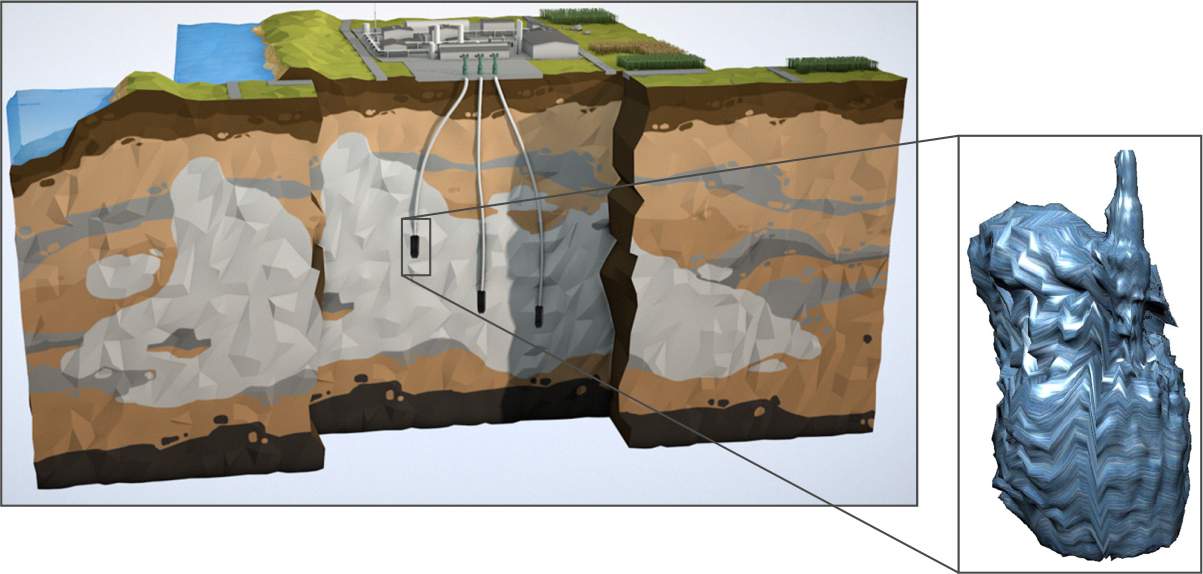Jemgum H2
With the revised national hydrogen strategy in summer 2023, the German government set the course for the ramp-up of the hydrogen economy and, by doubling the electrolysis expansion targets from 5 to at least 10 GW in 2030, is placing a special focus on the production of green hydrogen.
Challenging here is that renewable energy sources such as wind or photovoltaic plants are not constantly available to generate electricity. This is where energy storage systems come into play, which, for example, can use hydrogen as an energy carrier to balance out fluctuations between generation and consumption and thus make energy flexibly available. In contrast to electricity storage systems (in the form of batteries), underground storage systems offer the possibility of storing large amounts of energy over longer periods of time without losses. From a technical point of view, cavern storage facilities are particularly well suited for this purpose, as they can temporarily store energy in a highly flexible manner and release it again in a relatively short period of time when needed.
Near the East Frisian town of Leer, astora operates the Jemgum natural gas storage facility. There, natural gas is safely stored in underground cavities – so-called caverns. The special feature: astora can react flexibly to customer requirements thanks to high injection and withdrawal rates.
astora would like to transfer this advantage to the future hydrogen energy system in cooperation with the grid operators and thus continue to make an important contribution to Germany's energy supply.
As part of a feasibility study, astora has investigated whether an existing cavern of the Jemgum natural gas storage facility would be suitable for storing hydrogen.
The study was initiated in 2021 with the aim of identifying, among other things, suitable processes for the storage and withdrawal of pure hydrogen that meet all relevant safety and quality standards of gas-based systems. Furthermore, the determination of an initial cost and time schedule is carried out.
The results show that the existing geological formations are suitable for the storage of hydrogen and that the construction of a hydrogen storage facility could be implemented.
Currently astora is working on the basic conceptual design of the plant and is in exchange with the responsible authorities.
How is hydrogen produced?
Since not all sectors of the economy (such as the steel or cement industries) can be fully electrified, special attention is paid to the use of hydrogen as an energy carrier.
This can be obtained by means of various processes. Depending on which one it is, a distinction is made between green, gray, blue or turquoise hydrogen:
"GREEN" hydrogen is referred to hydrogen produced from water (H20) by an electrolysis process using electricity from renewable energy sources.
"GREY" hydrogen is produced from methane (CH4) on the basis of so-called steam reforming. This produces CO2 as a by-product, which is emitted into the atmosphere.
"BLUE" hydrogen is more environmentally friendly because the CO2 produced during generation can be captured and then stored in separate, suitable underground formations (CCS = Carbon Capture and Storage).
"TURQUOISE" hydrogen is produced by pyrolysis. In this process, methane is broken down under high temperatures (>1200°C). The by-product is solid carbon, which serves as a raw material for other industries.


